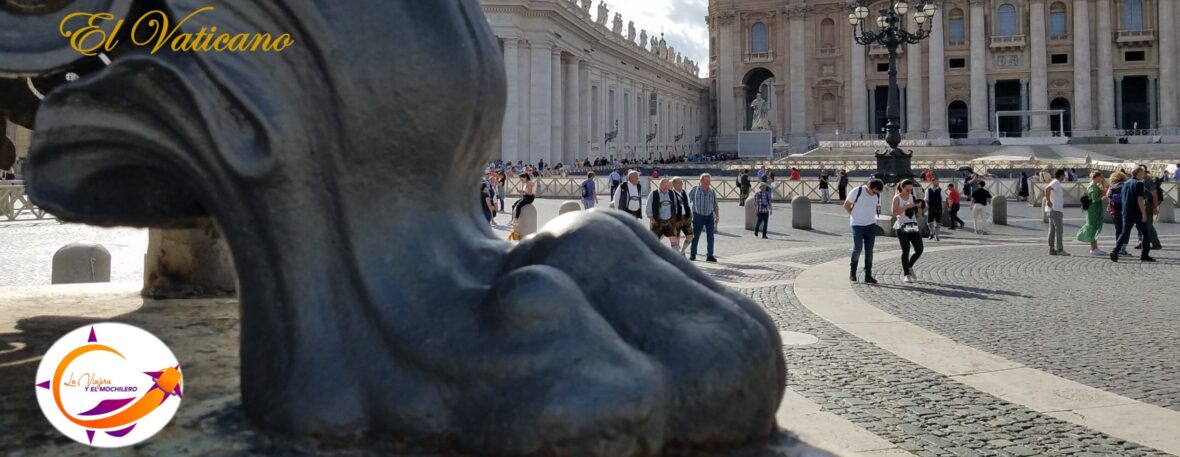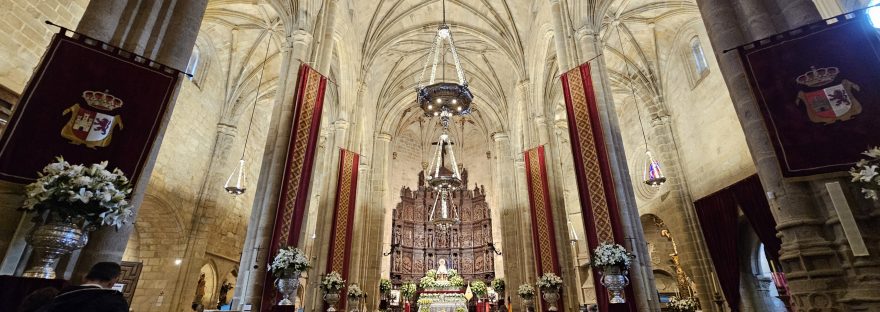Cáceres is a city that invites visitors to discover not only its medieval history but also its traditions. During our stay, we had the opportunity to witness one of the city’s deeply rooted religious traditions: the visit of the Virgin of the Mountain to the Co-Cathedral of Santa María, the most important Christian temple in Cáceres.
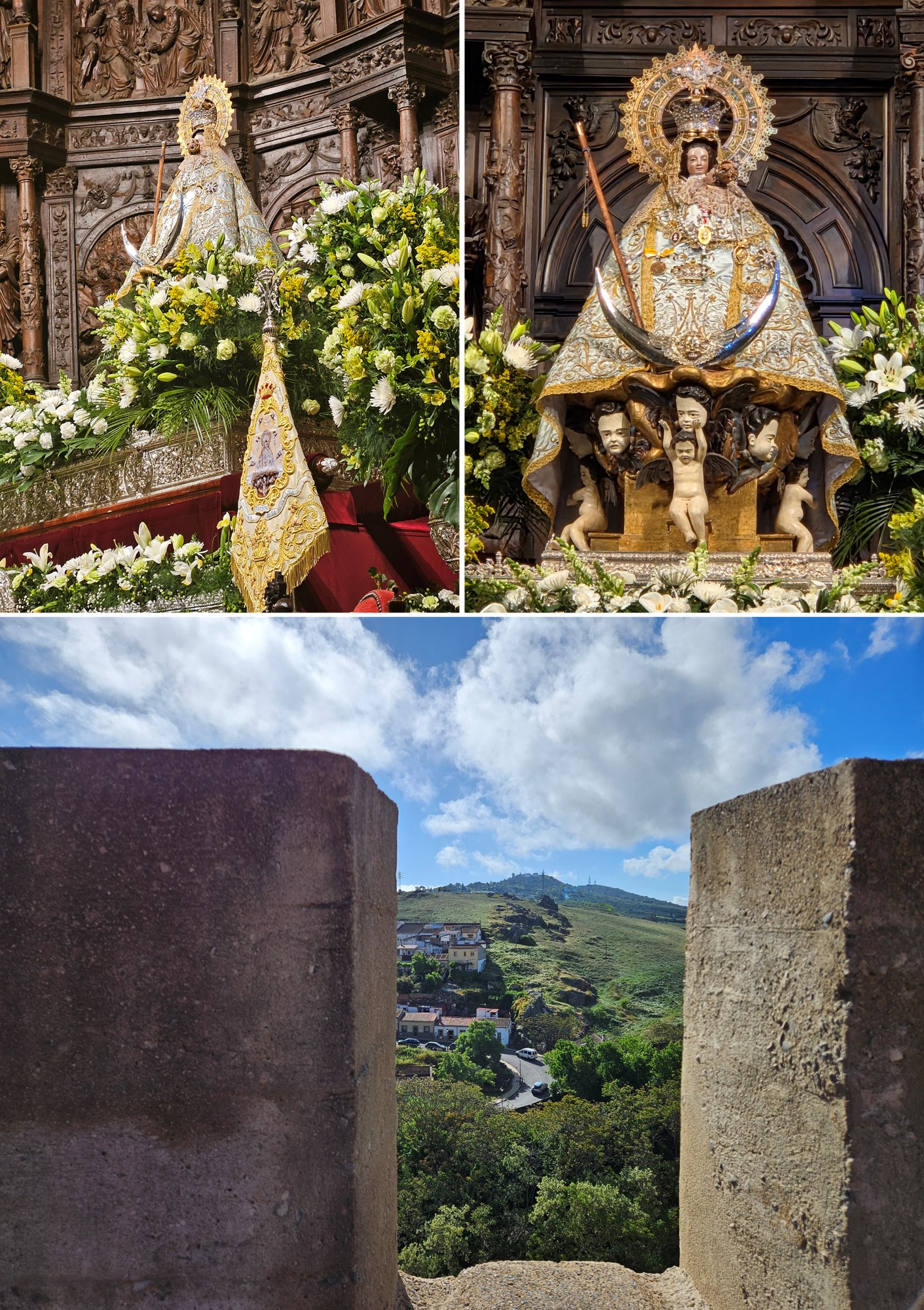
Once a year, the Virgin of the Mountain is brought down from her hermitage in the Sierra de la Mosca to remain for nine days in the Co-Cathedral of Santa María. On the first Sunday of May, her return to the hermitage is celebrated. The traditional route goes from the Co-Cathedral to Fuente Concejo, accompanied by the city’s main authorities and a large number of devotees.

The Holy Church of Santa María has held the rank of Co-Cathedral since 1957 and is located in Santa María Square. The origins of the church date back to the 13th century, in the Romanesque style. The temple is built of ashlar stone, with an austere exterior typical of medieval Spanish architecture. Due to reconstructions carried out between the 15th and 16th centuries, Gothic and Renaissance transitional elements were added, which can still be seen in the tower and the choir.
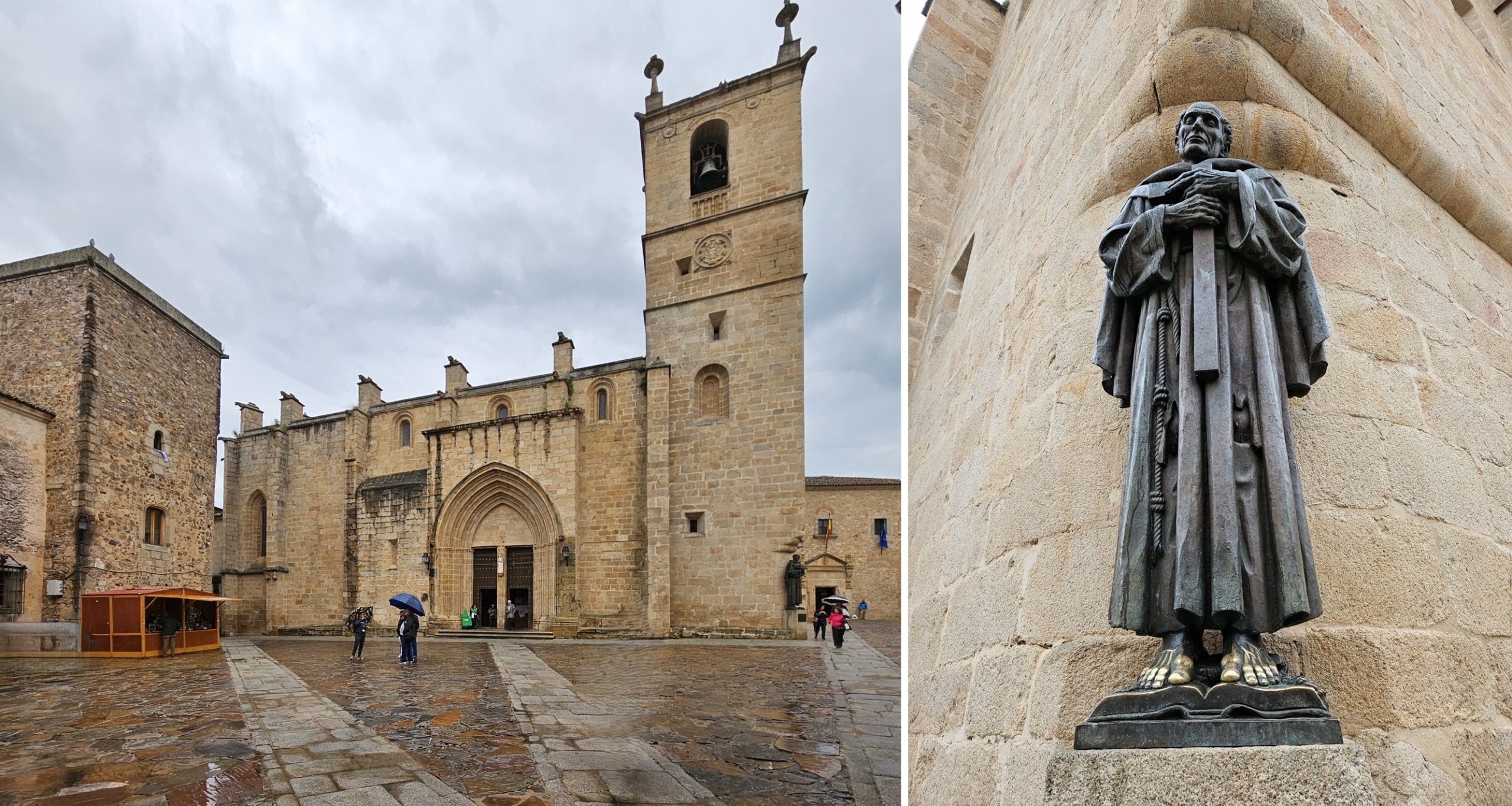
Its façade rises in height thanks to the three-tiered tower designed by master builder Pedro de Ybarra and completed in just two years, between 1554 and 1556. On one corner of the tower stands a sculpture of Saint Peter of Alcántara, created by Extremaduran artist Enrique Pérez Comendador in 1954. The Co-Cathedral of Santa María has two entrances, but the main one, opening onto the Plaza Mayor on the Gospel side, is the most distinctive. Its pointed Gothic arch was built at the end of the 13th and beginning of the 14th century.
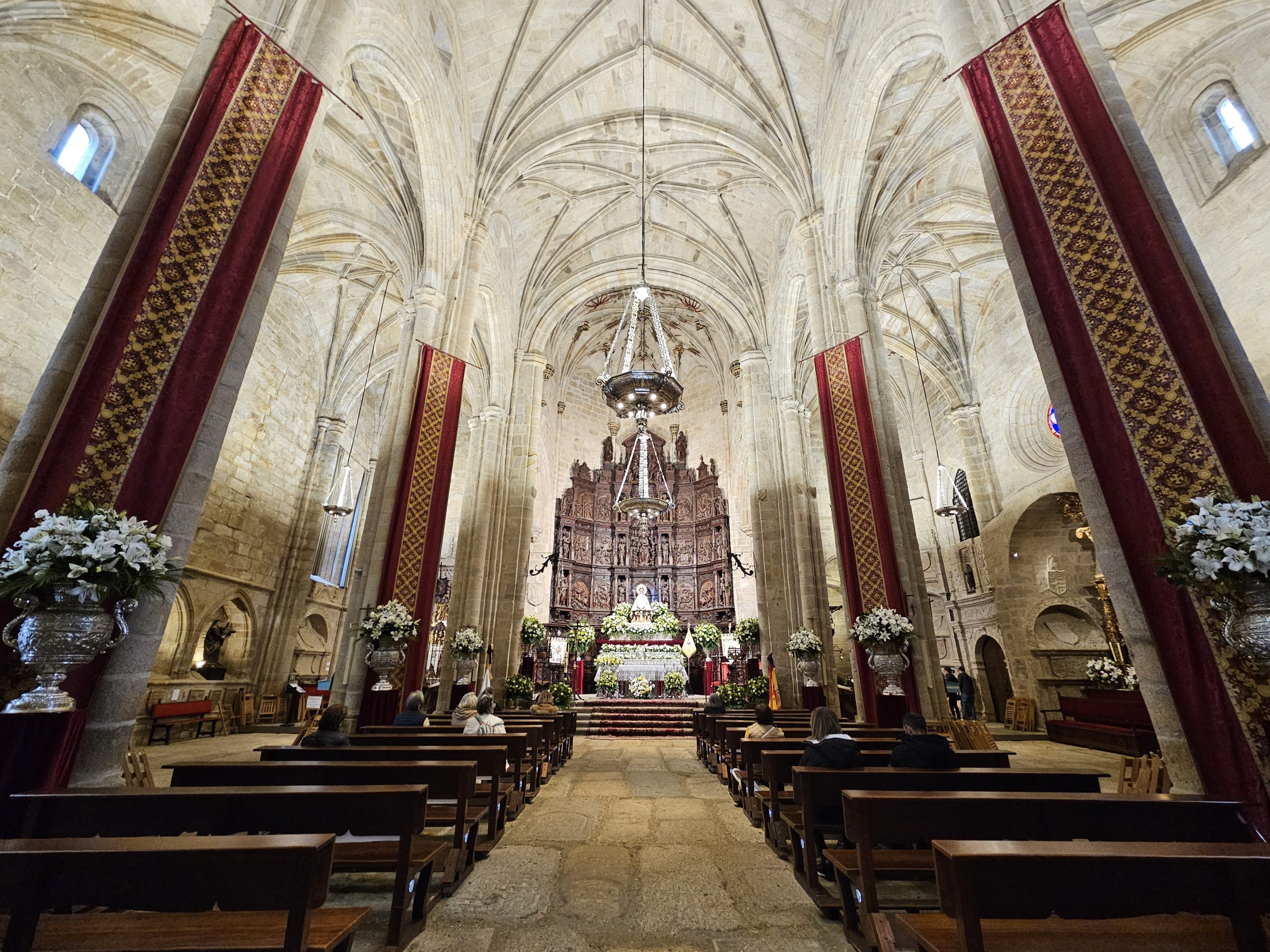
Inside, the rectangular floor plan reveals Gothic elements in its three naves: the Gospel nave, the central nave, and the Epistle nave. The ribbed vaults bear the coats of arms and heraldic symbols of Cáceres’ most prominent families.
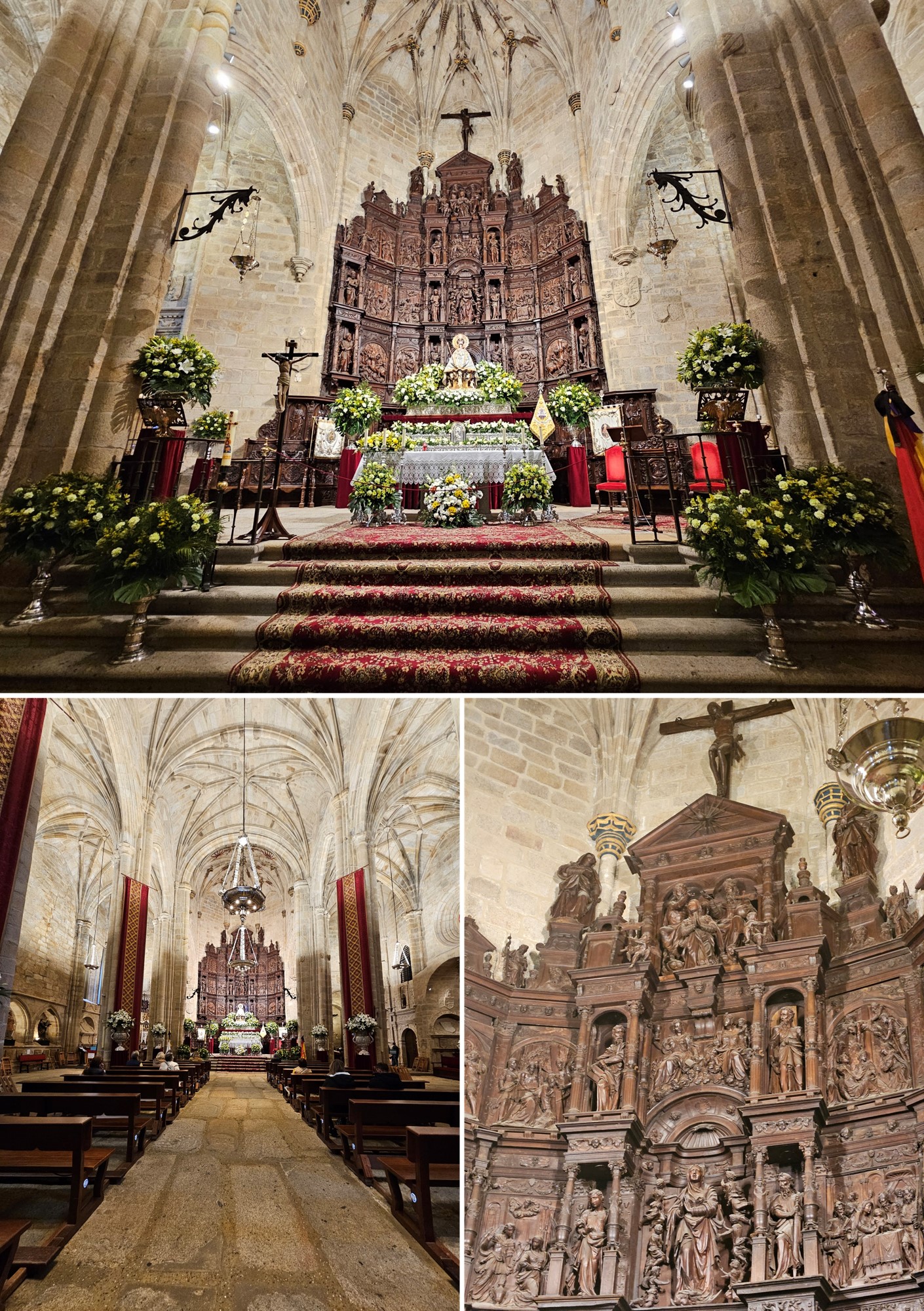
The main altarpiece of the Co-Cathedral of Santa María is a Renaissance masterpiece. This cedar and oak work, created by Guillén Ferrant and Roque Balduque, was left unpainted, which makes it all the more striking by highlighting its exquisite carving. It is structured in three tiers with sculptures of the Apostles and other biblical figures. The central section focuses on themes related to the life of the Virgin and the Passion of Christ. The most significant figure is likely the Assumption of the Virgin. Above the altarpiece is a painting representing the struggle between good and evil, depicting the Archangel Michael confronting demons.
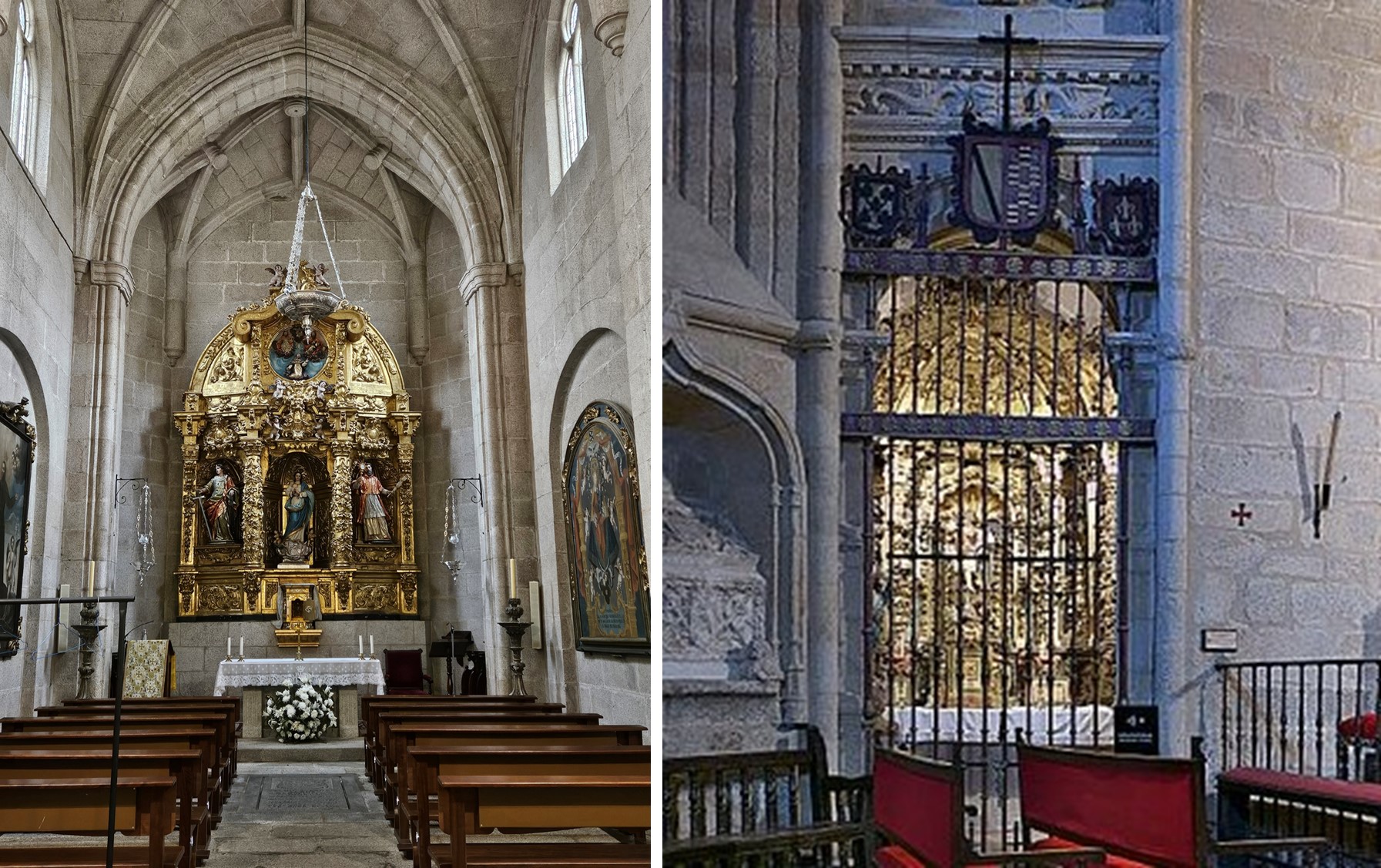
The Co-Cathedral of Santa María contains three main chapels: the Chapel of Saint Anne, one of the oldest in the temple, built in 1446; the Chapel of Saint Michael, built in 1551 and sponsored by the Carvajal family, featuring a Baroque altarpiece; and the Chapel of the Black Christ.
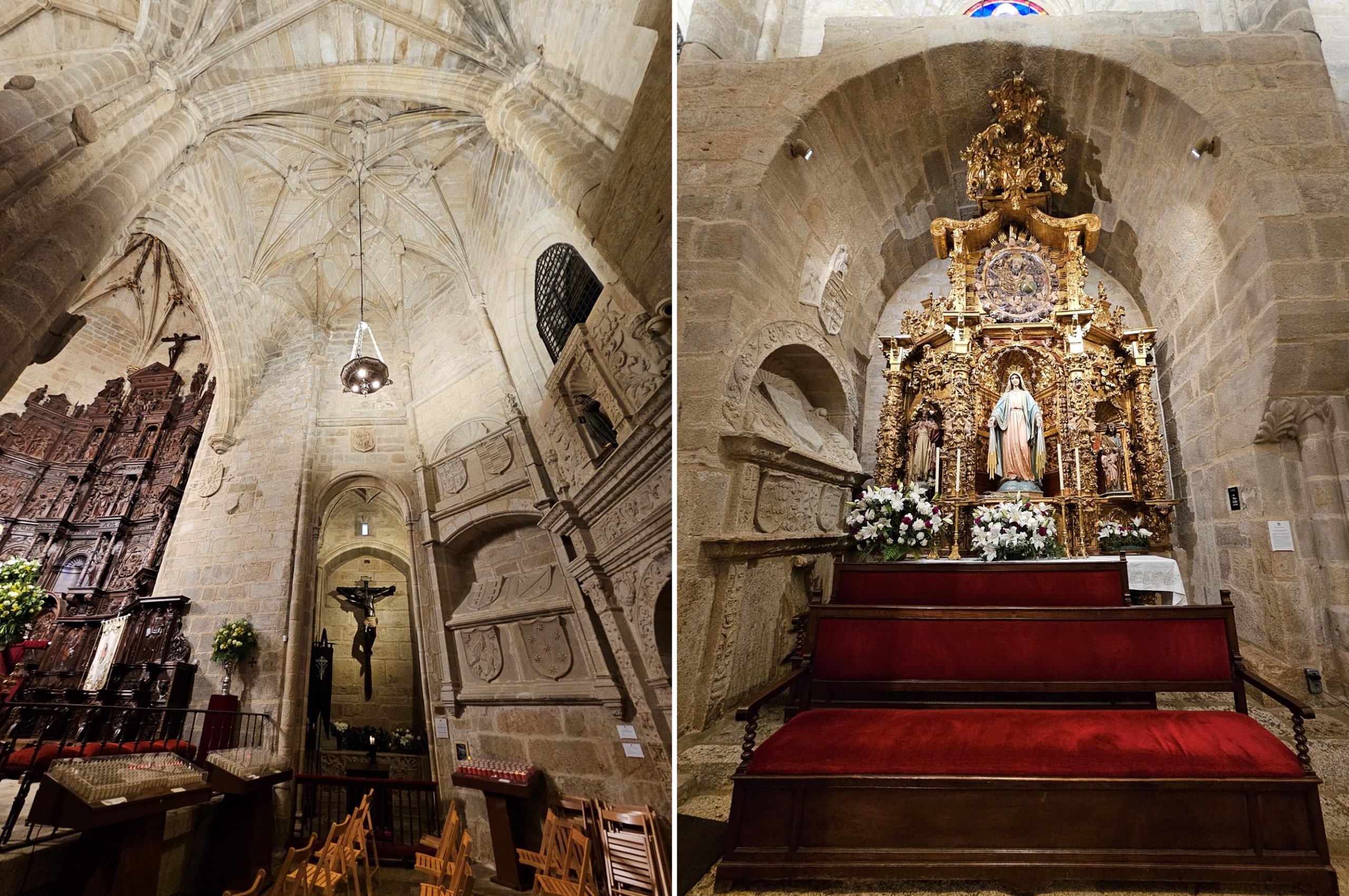
This chapel, although smaller in size compared to the others, is one of the most visited, as it houses the Gothic image of the Black Christ from the 14th century. Deeply venerated by the people of Cáceres, it plays a central role in Holy Week processions. While these are the most important chapels, the Co-Cathedral also includes the Chapel of Our Lady of the Miraculous Medal. Today, this chapel serves as the center of devotion to the Virgin of the Miraculous Medal, a cult strongly embraced by the Catholic faithful.
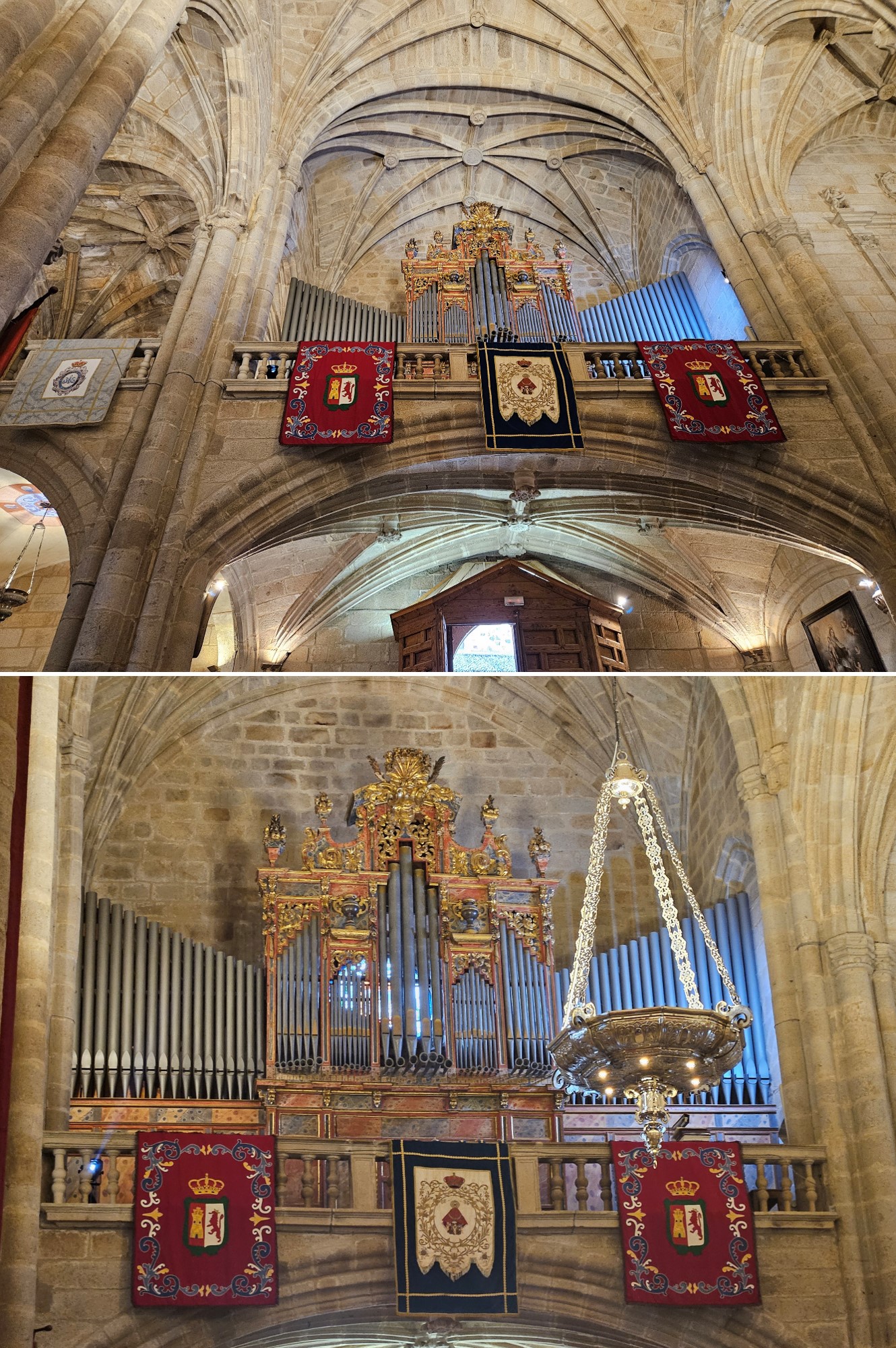
At the foot of the temple rises the choir loft, built by master Pedro de Marquina in the mid-16th century. Another important element of the Co-Cathedral is its organ, built by Manuel de la Viña in 1703 and restored in 1973 by the firm Orgamusik.
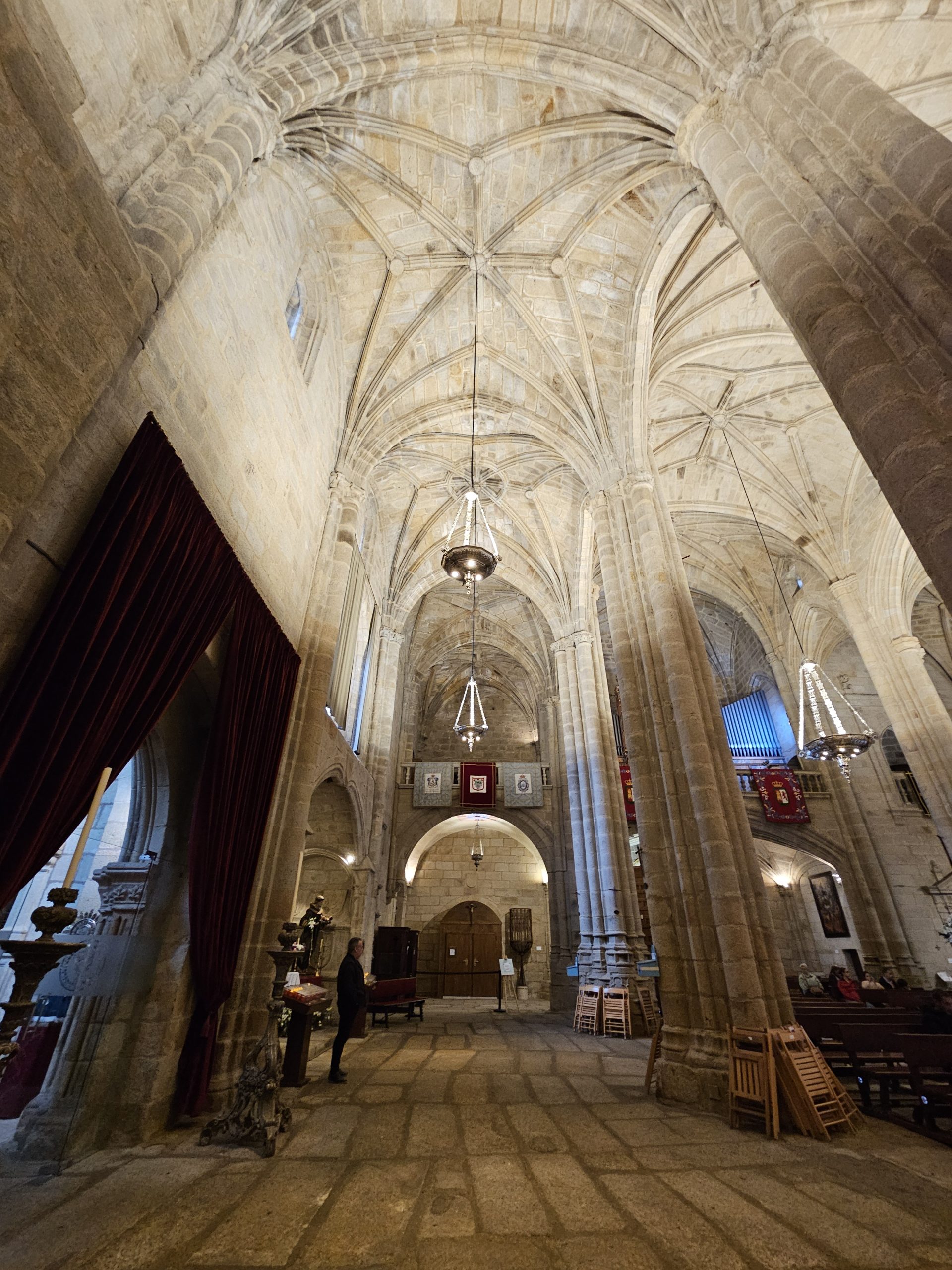
The interior of the Co-Cathedral also includes other noteworthy spaces, such as the sacristy, which now houses the Cathedral Museum, and the tomb of Francisco de Godoy. The museum contains liturgical objects, silverwork, and sculptures of great historical and artistic value.

